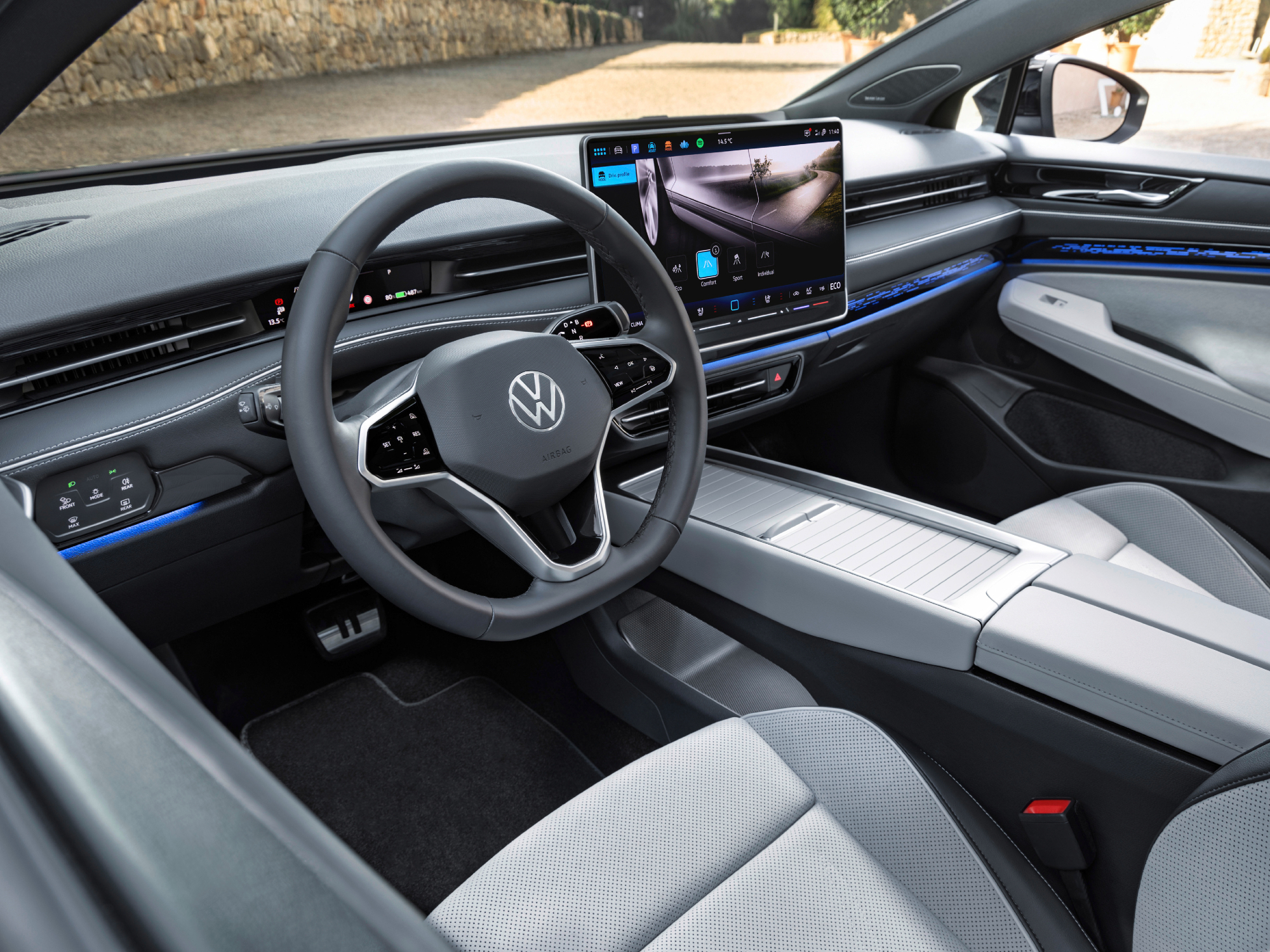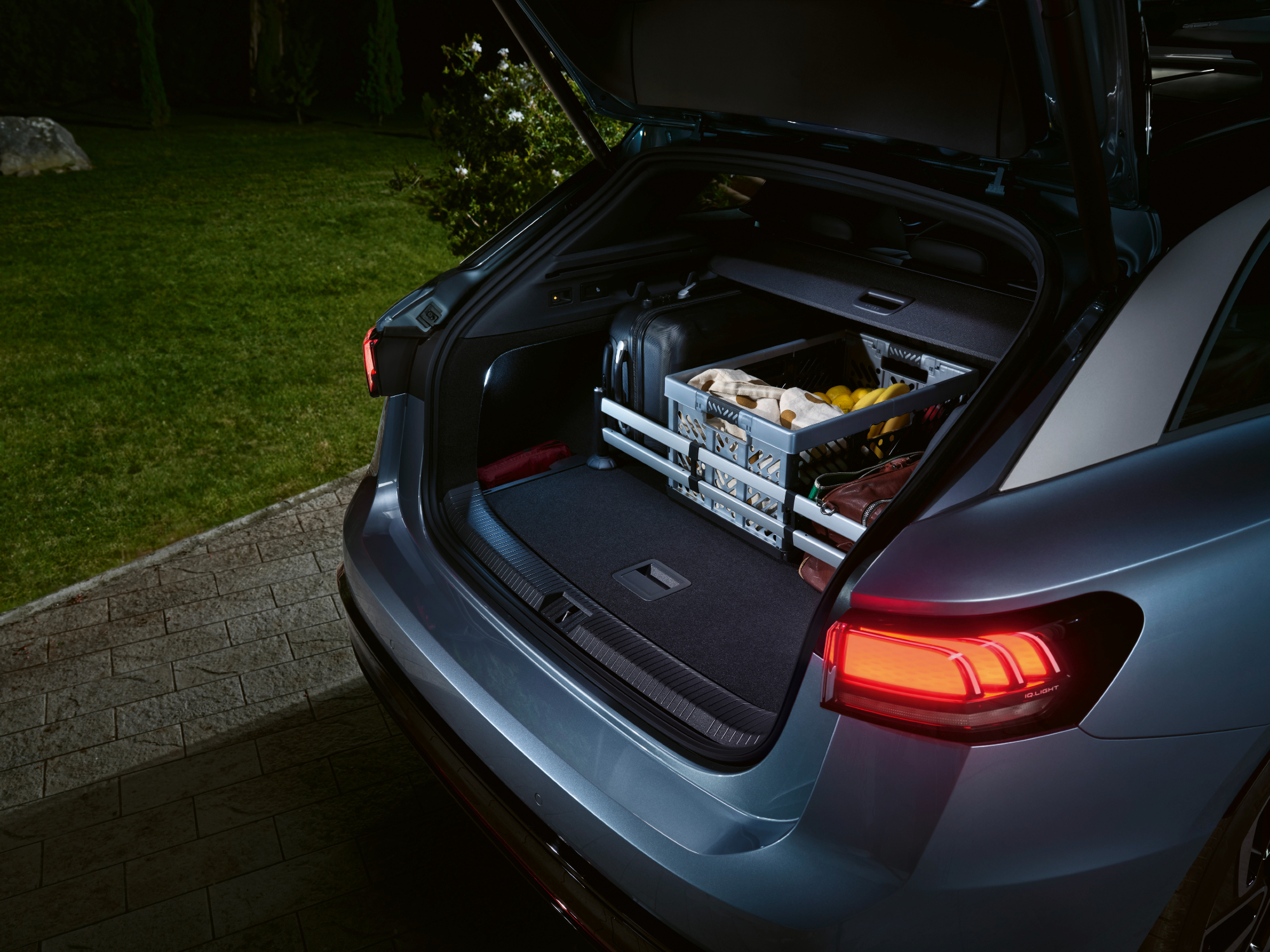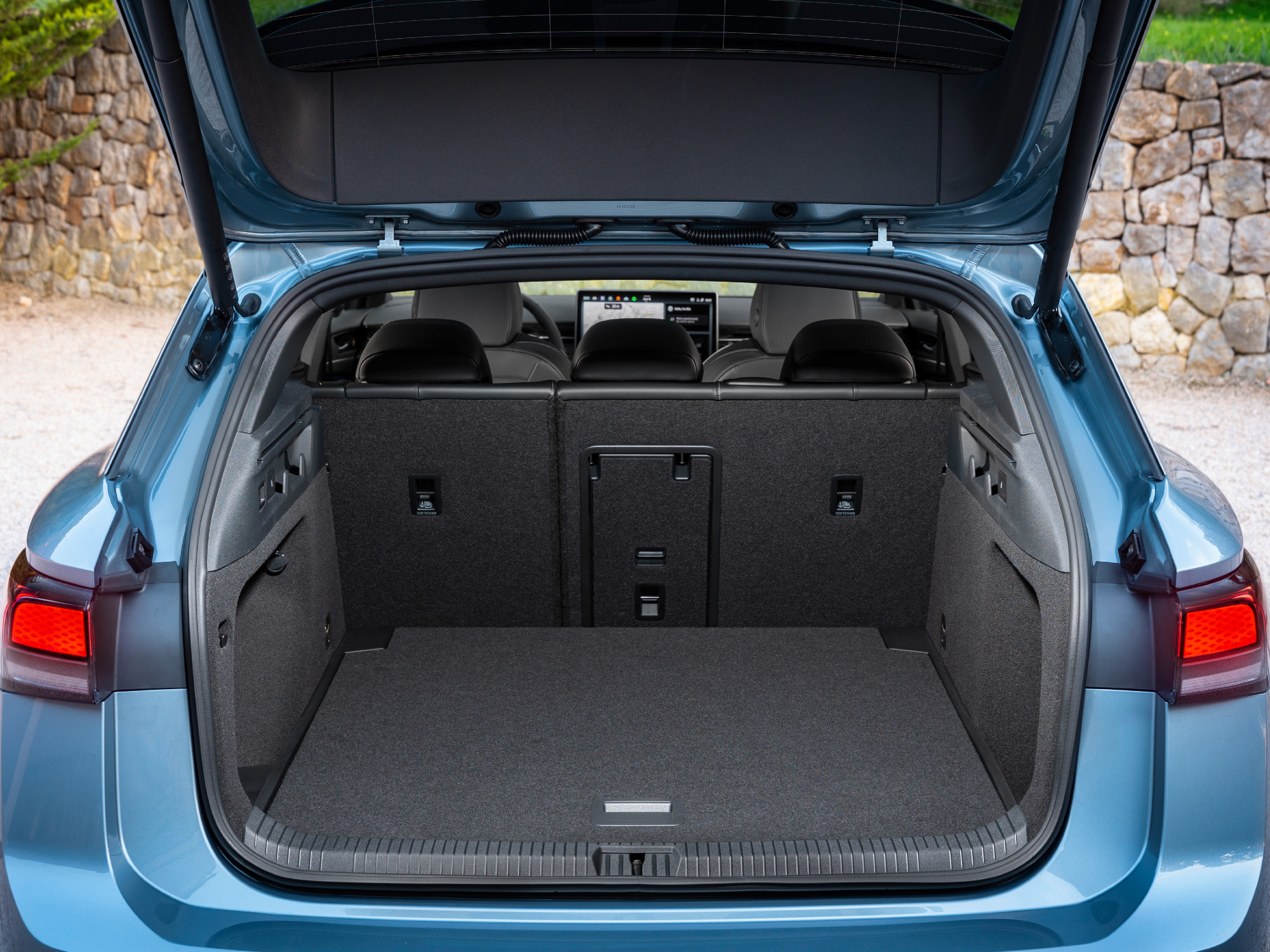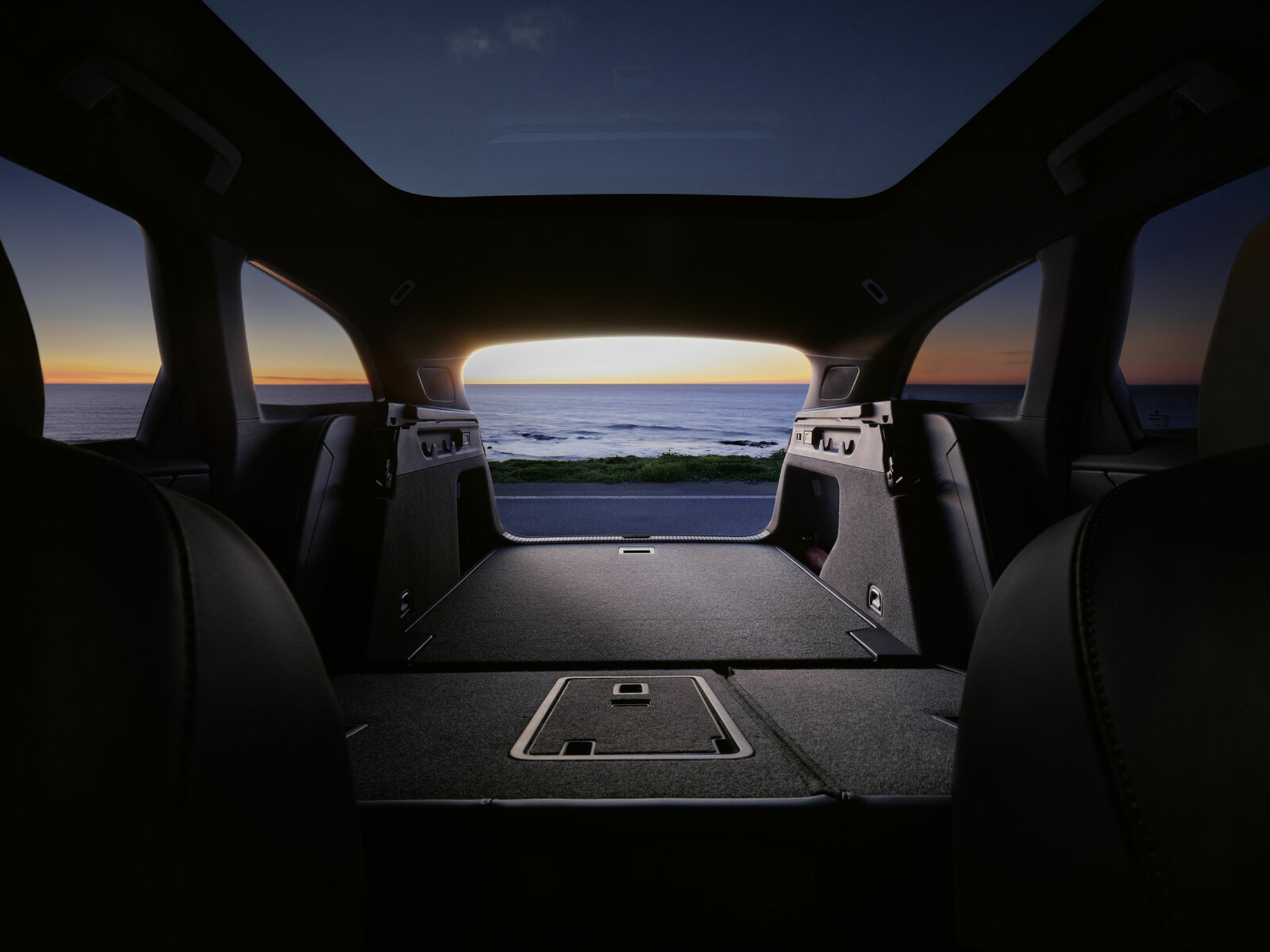
Volkswagen begins presales in Europe this quarter of the ID.7 Tourer, an estate car version of the VW ID.7 fastback saloon announced last fall as the VW EV flagship. In the U.S., we’d call the ID.7 saloon a sedan and the estate car a station wagon. The photos that accompany this article are of near-production vehicles, VW says.
When VW introduced the ID.7 in November 2023, the company stated it was a worldwide release, and U.S. sales would follow the initial rollout in Europe. The ID.7 Tourer is a good-looking vehicle with more visual impact than the saloon, so I hope VW also decides to sell this newer model in the U.S. Station wagons haven’t sold well in the U.S. in recent years unless re-labeled as cross-over utility vehicles (CUVs) — which could keep the Tourer from our shores.

Why the ID.7 Tourer matters to VW
Volkswagen describes the ID.7 Tourer as an ideal business car because of its spaciousness, comfort on long trips, driver cockpit setup, and long-range per charge. Two battery capacities will be available for the ID.7. VW claims the range for the larger battery is up to 426 miles, using the EU’s WLTP range rating standard, which is more optimistic than U.S. EPA ratings. But even if the real-world driving range is closer to 400 miles, that’s impressive for business travelers. The larger battery will charge at up to 200 kW at DC charging stations, potentially recharging from 10% to 80% in less than 30 minutes.
But the ID.7 Tourer isn’t all work and no play; in VW’s vision, it’s for families, too. “The new ID.7 Tourer is a perfect estate model, especially for families and long-distance drivers. With plenty of space and a high level of comfort, it impresses fully electrically with long ranges!” according to Imelda Labbé, Member of the Volkswagen Brand Board of Management, responsible for Sales, Marketing, and Aftersales.
VW ID.7 Tourer driver cockpit convenience and creature comforts
The ID. 7’s cabin will take care of passengers with automatic air conditioning, optional pressure-point massage seats, and a Wellness in Car app that can adjust air conditioning, sound, background lighting, sunroof smart glass functioning, seat air conditioning, and massage, plus the infotainment display settings. The app will be pre-configured with three modes: Fresh Up, Calm Down, and Power Break, which sound like they could be welcomed wholeheartedly by business travelers but possibly over-optimistic for families on long trips with kids.
VW includes benefits for drivers, too, with a standard augmented reality (AR) heads-up display function that projects important information on the windshield so the driver doesn’t need to search for smaller dials and indicators lower on the dashboard. The exact size of the center stack display isn’t public, but it looks huge, which can benefit the driver and passengers alike.
VW ID.7 Tourer cargo space
Whether you’re driving an estate car or a station wagon for business travel or to haul family members to sporting events or on vacation, space matters. The ID.7 Tourer can hold up to 21.6 cubic feet behind the second row of seats in this five-passenger vehicle. However, the second-row seatbacks fold forward, and the space almost triples to 60.5 cubic feet. Those measurements are respectable, and to put them in context, the Volvo V60 Cross Country has just a bit more space behind the second row, 23.2 cubic feet, and the same 60.5 cubic feet for cargo behind the front seats.
If U.S. car buyers stray from pickup truck lots and lofty, lifted SUVs long enough to assess how we use our vehicles, cars like the ID.7 Tourer could find a healthy market. The VW news release did not include extensive specifications for the ID.7 Tourer, and there was no mention of price range. It’s early to make a call on the latest VW EV, but I hope the stats, the numbers, and the prices appeal sufficiently that VW will sell this attractive car in the U.S.
Editors' Recommendations
- VW reveals 2025 ID. Buzz trim levels and features, no launch date or prices yet
- GMC Sierra EV Denali Edition 1: Ready to go further with improved range
- 2024 Mustang Mach-E GT performance upgrade: Ford’s fast EV love note
- Despite reports to the contrary, Ford is not wussing out on EVs
- Mercedes-Benz Wallbox smart home charger now available nationwide for fast EV charging











